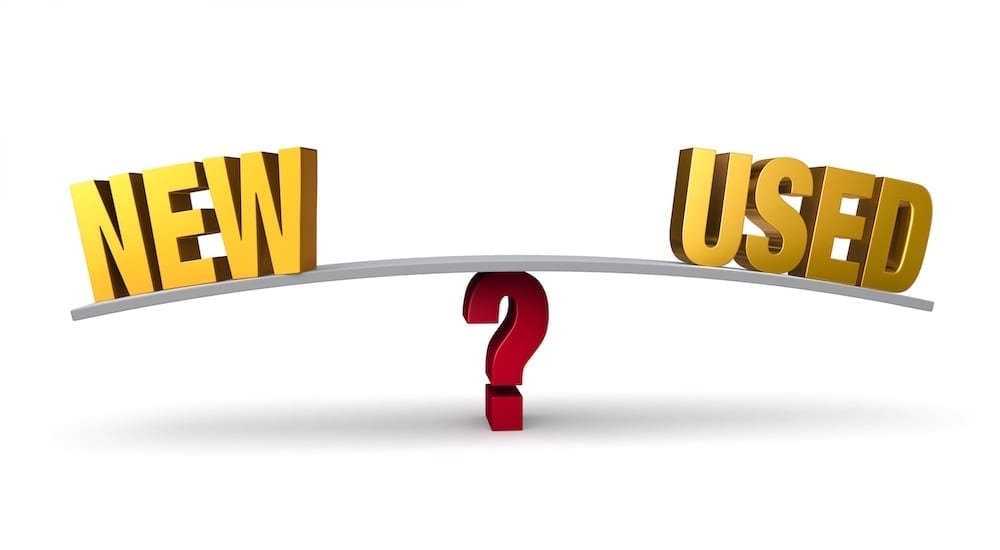Yesterday, I was driving in the car with my daughter…my incredibly goal-oriented, financially-savvy twelve-year-old as she regaled me with her equivalent of a fifteen-year plan. Bear with me here, and I promise I won’t go into her plans of getting accepted to the Rhode Island School of Design (RISD) and having a custom-built ‘tiny home’. Before any of that stuff, we talked about the need for realistic expectations when buying her first car (a car which neither her mother or I will purchase for her). Of course, I prefaced it by explaining to her that (regardless of her hard work) she shouldn’t expect to score her dream car right off the bat and for her first vehicle. In fact, most of our first vehicles serve as perfect depictions of compromise, defined by our budgetary limitation. Remembering my own teenage disdain for the realization that I’d have to ‘settle’ for a used car, I sought to equip her with the right perspective from day one. And thus, we began to discuss such topics as depreciation, the value of used and certified pre-owned cars. My hope (since she’s proven herself adept at grasping adult concepts, and integrating them into her plan) was that it would make her a smarter car-buyer.
(I suppose time will tell…but it certainly inspired today’s topic of conversation)
Value of Choosing to Buy Used
How much does the idea of depreciation factor into your car-buying process? For many, it’s the simple acceptance of a necessary evil, recognizing that the purchase of any vehicle is the acquisition of a rapidly depreciating commodity. There are no expectations of Return on Investment (ROI), aside from the optimistic hope of a few years of trouble-free ownership. But for some, depreciation is the motivation for buying a pre-owned vehicle rather than defaulting to a new model, simply out of habit (or desire).
Consider for a moment, this scenario. You have your mind (and heart) set on the purchase of a new model year offering, priced around $30,000 MSRP. You sign on the dotted line, then jump behind the wheel of your perfect new vehicle, to drive off the dealer’s lot. Well, we’ve all heard it before: a new car begins depreciating the moment it leaves the dealership. This is not an old wives’ tale. In fact, that vehicle will have depreciated by as much as 11% before the rear tires hit the street. This means that you could bang a U-turn, pull back up to the dealership, try to resell the vehicle back to the dealership and they’d only be expected to offer you around $27,000. You’ve effectively lost three-grand in the course of thirty seconds (making it a far more humbling loss than that night you blew all your money in Vegas).
That’s how quickly depreciation begins to affect you, and the majority of aggressive depreciation occurs over the first five years of ownership. After a year of ownership, that $30,000 vehicle has lost around $7,500. At the three-year marker, that loss has jumped to nearly $14,000; and after five years, it has lost nearly $19,000 in value. Should you decide to trade in that vehicle, you can only expect a fraction of that $11,000 valuation (allowing the dealership to cover restoration and cleaning costs, while still turning a profit on the resale of the vehicle.
So, yes, the purchase of a used vehicle means that you will experience a less-aggressive rate of depreciation. But the fact that you’ve allowed the previous owner to carry the lion’s share of its depreciation means that a more expensive vehicle or trim level could now fit your budget far better than if you had tried to buy it new.
And therein lies the true value. As born and bred consumers, we tend to think of our vehicles as an extension of our personalities and personal brand. As such, it can be hard for us to ‘settle’ for a vehicle if we don’t think it aligns with our sense of self. While we might think of a shiny, flashier vehicle as the perfect fit for our image, it may not always be the perfect fit for your budget. Rather than overextend ourselves financially in order to chase a dream, it benefits us to consider more sensible alternatives. And in being able to afford a more expensive vehicle or trim level, we can pursue a sensible alternative while still aspiring to something greater.
Certified Pre-Owned
And if there’s any concern about the inevitable cost of repair and maintenance associated with purchasing of a used vehicle, a certified pre-owned (CPO) vehicle might be worthy of your consideration. While it certainly increases the cost, CPO vehicles are priced higher because they’ve undergone rigid inspections to ensure that the meet manufacturer standards. With all major systems refurbished, repaired or replaced as needed they help to discourage concerns related to reliability. Such concerns are also minimized by the extended warranties that are included in most certified pre-owned programs.
Not all programs are created equal, but they all offer unique incentives that include perks ranging from car rental allowances to satellite radio and assistive support services such as OnStar. For those looking for a little more security in their used car purchase, a CPO program might be well worth exploring.
Plus…
The decision to buy a pre-owned vehicle can also mean a reduction in your upfront and incremental costs. Used vehicles can cost less in terms of tax, title, registration and insurance costs. So, not only are you minimizing the costs paid to acquire the vehicle but the cost of operating it throughout the course of ownership and ultimately potentially raising the value of trading it in at a later time. That’s just smart.
With all that in mind, it is my hope that my daughter will feel more confident when she finds herself behind the wheel of her first pre-owned car . It is also my hope that you’ll feel just as comfortable when you find yourself behind the wheel of your next one.



